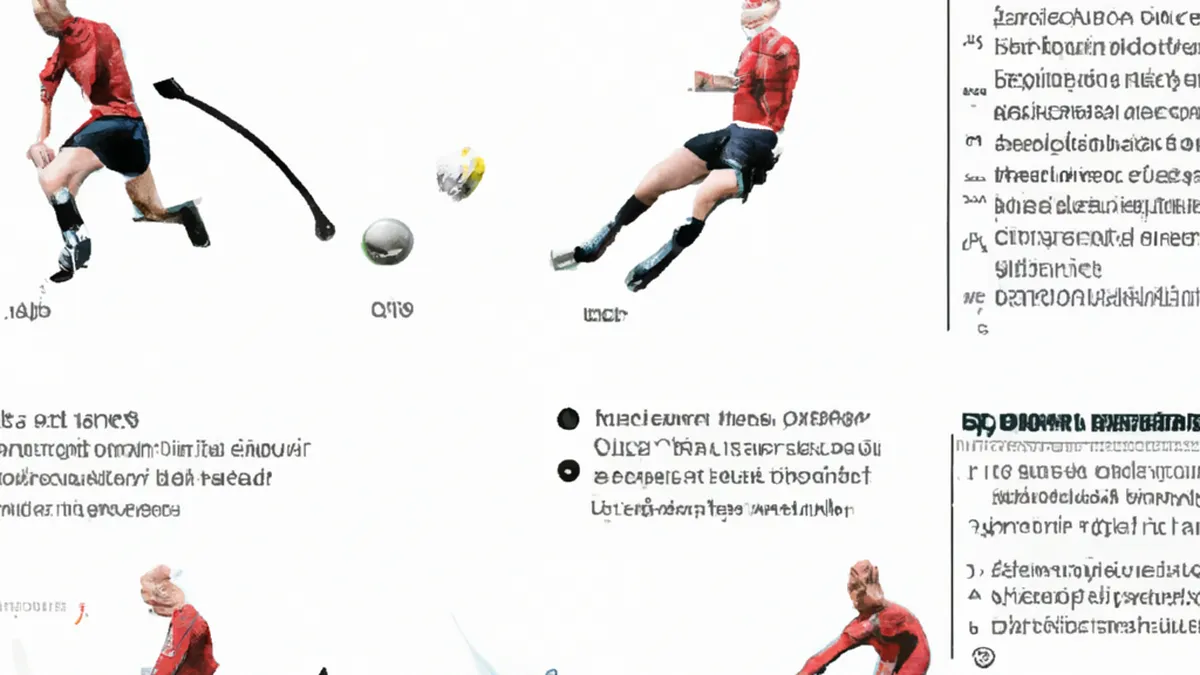Innovating Soccer Skills through Cutting Techniques
Analyzing the Biomechanics of Effective Cutting Techniques in Soccer
Soccer demands agility, speed, and precision. Players must develop effective cutting skills to change direction quickly while controlling the ball. Proper biomechanics enhance cutting techniques, improving performance and reducing injury risk. This post explores cutting biomechanics, effective techniques, and practical advice for players and coaches.
Understanding the Cutting Technique
Cutting allows players to evade defenders and create scoring chances. This movement involves rapid weight and direction shifts. Players must pivot on one foot while accelerating in another direction. Speed, ball control, and balance are essential during this action.
The Role of the Lower Body
The lower body is crucial for effective cutting. Leg muscles, including quadriceps, hamstrings, calves, and glutes, generate power for quick direction changes. Proper knee, hip, and ankle alignment ensures balance and prevents injuries.
**Key Muscles Involved:**
– **Quadriceps:** Crucial for knee extension during the push-off phase of a cut.
– **Hamstrings:** Help decelerate the leg and control motion during direction changes.
– **Calves:** Stabilize the ankle, providing a solid base for cutting.
– **Glutes:** Play a significant role in hip stability and power generation.
The Importance of the Upper Body
The upper body also contributes to effective cuts. Arms help maintain balance and generate momentum. Coordinated arm movements enhance speed and control during cutting actions.
Center of Gravity and Balance
The center of gravity impacts effective cutting. A lower center of gravity increases balance and stability, allowing quicker movements. Players should bend their knees and lower their hips before cutting to stabilize their bodies.
Tips for Effective Cutting Techniques
Players should focus on key aspects to master cutting techniques. Here are practical tips to enhance cutting skills:
1. **Practice Foot Placement:** Ensure your foot lands flat and shoulder-width apart during a cut. This position stabilizes your body and enhances balance.
2. **Maintain a Low Stance:** Bend your knees and lower your hips before executing a cut. A low stance increases your center of gravity.
Conclusion
In summary, effective cutting techniques rely on proper biomechanics, lower and upper body coordination, and maintaining balance.
Below are related products based on this post:
FAQ
What are the key muscles involved in effective cutting techniques in soccer?
The key muscles involved in effective cutting techniques include the quadriceps, hamstrings, calves, and glutes. These muscles work together to generate power for quick direction changes, stabilize the ankle, and maintain hip stability, all of which are essential for executing effective cuts.
How does the center of gravity affect a player’s cutting ability?
The center of gravity plays a significant role in a player’s cutting ability. A lower center of gravity increases balance and stability, allowing for quicker movements. Players should bend their knees and lower their hips before cutting to enhance their stability and improve their performance.
What are some practical tips for improving cutting techniques in soccer?
To improve cutting techniques, players should focus on proper foot placement by ensuring their foot lands flat and shoulder-width apart during a cut, which stabilizes the body. Additionally, maintaining a low stance by bending the knees and lowering the hips before executing a cut can increase balance and improve overall cutting skills.















Post Comment